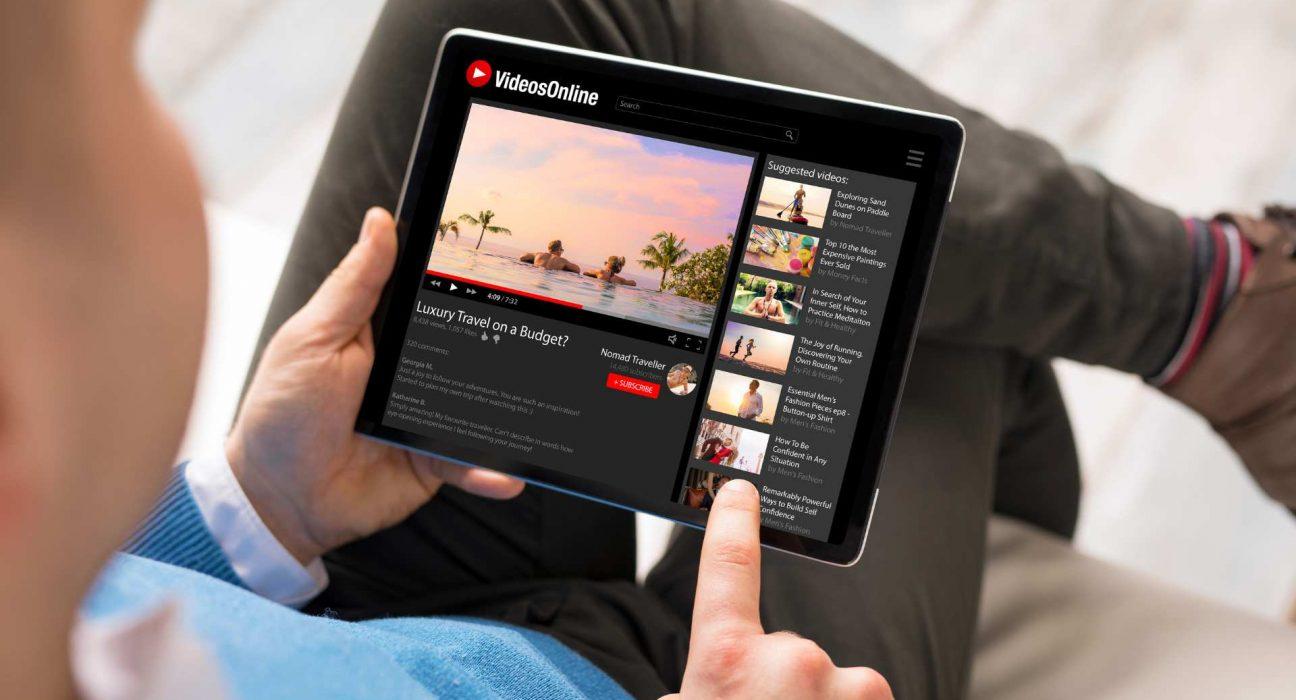A Guide to Video Creation for Social Media Success
In today’s fast-paced digital landscape, video content has emerged as a powerful tool for businesses to engage, connect, and resonate with their target audience. With social media platforms dominating the online sphere, creating captivating videos has become an essential component of any successful marketing strategy. This comprehensive guide aims to equip you with the knowledge and techniques to create compelling videos for social media, ensuring that your content stands out and drives meaningful results. From understanding the power of video content to optimising for optimum reach, we will go over every facet of video creation to help you create content that captivates and thrives in today’s competitive social media landscape.
1. Understanding the Power of Video Content in Social Media Marketing
1.1 The Rise of Video in Social Media
Video content has taken the world of social media by storm. From funny cat videos to informative tutorials, it seems like everyone is watching and sharing videos these days. The popularity of videos on platforms like Facebook, Instagram, and YouTube has skyrocketed, and this trend shows no signs of slowing down. If you want your brand to stand out and make an impact on social media, incorporating video content into your marketing strategy is a must.
1.2 Benefits of Incorporating Video Content
There are various reasons why video content is so effective in social media marketing. For starters, videos have the ability to capture viewers’ attention and engage them in ways that other types of material cannot. They’re visually appealing, dynamic, and provide an immersive experience that captivates audiences. Videos have a better potential of becoming viral, resulting in more exposure for your brand.
Moreover, videos can communicate complex messages quickly and effectively. Instead of writing lengthy articles or blog posts, you can convey information in a concise and visually compelling manner. This makes videos perfect for demonstrating products, explaining concepts, or even telling stories that resonate with your audience. By incorporating video content into your social media strategy, you can boost brand awareness, increase engagement, and ultimately drive conversions.
2. Defining Your Target Audience and Setting Clear Goals
2.1 Identifying and Analyzing Your Target Audience
Before you begin generating videos for social media, you must first identify your target audience.Understanding who your audience is, their preferences, and their behaviors will help you craft videos that resonate with them. Conduct market research, analyze your existing customer data, and use social media analytics tools to gather insights on your target audience. This information will guide your content creation process and ensure that your videos hit the mark.
2.2 Setting SMART Goals for Video Creation
To make the most of your video content, you need to set clear and measurable goals. Whether you want to increase brand awareness, drive website traffic, or boost sales, your goals should be specific, measurable, achievable, relevant, and time-bound (SMART). Define key performance indicators (KPIs) that align with your goals, such as the number of views, likes, shares, or conversions you want to achieve. By setting SMART goals, you can track your progress and optimize your video strategy accordingly.
3. Crafting Compelling Storylines for Video Creation
3.1 Understanding the Importance of Storytelling in Video
Storytelling is a powerful tool in video creation, as it helps connect with your audience on an emotional level. When you present a story in your videos, you establish a narrative that connects with your audience, making your material more memorable and shareable. People are more inclined to engage with videos that make them feel good, pique their interest, or make them laugh. So, rather than simply selling items or promoting services, focus on creating narratives that entertain, educate, or inspire your target audience.
3.2 Elements of a Captivating Video Storyline
To create compelling video storylines, you need to consider certain elements. Start by identifying the central message or theme you want to convey. Then, develop a structure for your video that includes a captivating beginning, a coherent middle, and a memorable ending. Use visuals, music, and voiceovers to enhance the storytelling experience and evoke the desired emotions. Additionally, keep your videos concise and to the point, as shorter videos tend to perform better on social media platforms.
4. Choosing the Right Video Format and Length for Social Media Platforms
4.1 Understanding Video Formats and Their Appropriate Use
Different social media platforms have different video format requirements and limitations. Familiarize yourself with these formats and choose the ones that best suit your content and platform of choice. For example, vertical videos work well on Instagram Stories, while square or landscape videos may be more appropriate for Facebook or YouTube. By understanding the nuances of video formats, you can ensure that your content looks its best on each platform.
4.2 Determining the Ideal Video Length for Different Platforms
When it comes to video length, it’s important to cater to the preferences of each social media platform. Shorter videos typically perform better since they are more likely to hold the viewer’s attention. However, the ideal length can vary depending on the platform and the type of content. For instance, on platforms like Instagram and Twitter, where attention spans are shorter, aim for videos that are 30-60 seconds long Longer-form content on YouTube allows for more versatility, but keep it compelling and avoid unnecessary fluff.
Remember, the key is to craft videos that are concise, informative, and visually compelling, regardless of the platform. With the right format and length, your videos will have a greater chance of capturing and retaining the attention of your target audience.
5. Tips and Techniques for Filming and Editing Engaging Videos
5.1 Essential Equipment and Setup for Quality Video Production
Lights, camera, action! When it comes to creating captivating videos, having the right equipment and setup can make a world of difference. Don’t worry, you won’t need a Hollywood budget for this. Begin with a good camera, whether it’s a DSLR or just your smartphone. Invest in a tripod to keep your shots steady and avoid that Blair Witch Project vibe.
Next, lighting is key. Natural light is your best friend, so try to film near a window or outdoors If you’re filming indoors, get a few cheap softbox lights to illuminate your subject. And don’t forget about sound! Avoid that dreaded echo by using an external microphone or improving the acoustics of your filming space with cheap soundproofing foam panels (bonus points for the futuristic look).
5.2 Filming Techniques to Enhance Video Appeal
Lights, camera, but don’t forget the action! To make your films more interesting, use several filming techniques that enhance visual interest. Experiment with different angles like overhead shots, close-ups, and wide shots to create variety. Move the camera around to capture different perspectives, like a smooth pan or a dramatic zoom. Just keep it steady and avoid any shots that cause motion sickness.
Don’t forget about the rule of thirds. Imagine dividing your frame into a grid of nine equal parts, and try to position your subject along one of those lines or at the intersections. This adds balance and visual interest to your shots. And remember, practice makes perfect, so don’t be afraid to learn from trial and error!
5.3 Tips for Polished and Professional Videos
Lights, camera, and now it’s time for the magic of video creation where you can take your raw footage and transform it into a polished and professional video. Begin by organising your clips and removing any extraneous content. With the video maker tool, you can effortlessly organize your clips and trim them down to create engaging content for platforms like YouTube shorts, Instagram reels, and TikToks. Use transitions to smooth out your cuts and keep the flow of your video seamless. This tool offers a variety of transition options to choose from, ensuring your video looks polished and cohesive.
Add some music to set the mood and enhance the overall experience. This video maker comes equipped with a library of royalty-free music tracks, so you can easily find the perfect soundtrack for your video. Don’t go overboard with fancy effects and filters, though; less is more when it comes to maintaining viewer interest.
6. Incorporating Visual and Auditory Elements to Enhance Viewer Engagement
6.1 Choosing Visual Elements that Align with Your Brand
Lights, camera, visual elements that make your brand shine! When making social media videos, it’s critical to use visual components that are consistent with your company identity. Whether it’s colors, fonts, or graphic styles, consistency is key. You want viewers to instantly recognize your videos and connect them with your brand.
Consider creating a brand style guide that outlines your visual elements. This will ensure consistency across all your videos and make your brand more memorable So, whether you’re recording against a vivid backdrop or using branded animations, keep in mind that visual components are critical to capturing your audience’s attention.
6.2 Utilizing Sound and Music to Amplify Emotional Connection
Lights, camera, sound, and music to tug at those heartstrings! We all know the power of music, so don’t underestimate its impact on your videos. Sound and music can amplify emotions, create atmosphere, and make your videos more memorable.
Choose music that fits the mood of your film and enhances your brand’s personality. From uplifting beats to soothing melodies, the right soundtrack can captivate your audience and enhance their viewing experience. Just make sure to use copyright-free music or obtain proper licensing to avoid any YouTube takedowns. We don’t want any legal battles being the grand finale of your video creation journey!
7. Optimizing Video Descriptions, Tags, and Thumbnails for Maximum Reach
7.1 Writing Engaging and SEO-friendly Video Descriptions
Lights, camera, description, action! Writing compelling and SEO-friendly video descriptions can greatly improve your chances of reaching a larger audience. Start with a hook that grabs viewers’ attention and entices them to watch. Then, provide a concise summary of your video, highlighting its main points and benefits.
Don’t forget to sprinkle in relevant keywords throughout your description. This helps search engines understand what your video is about and improves its chances of appearing in search results. Just be sure to keep it natural and avoid keyword stuffing. We’re creating captivating content, not spam!
Oh, and if you want to be extra fancy, include timestamps in your description so viewers can easily jump to specific sections of your video. It’s like providing them with their very own video navigation system. How thoughtful!
7.2 The Power of Tags in Video Discovery
Lights, camera, tags, and action! Tags are small labels that help search engines and social media algorithms understand what your video is about. They play a crucial role in helping your video get discovered by the right audience.
Consider the keywords that your target audience may use when searching. Be specific and choose tags that accurately describe the content of your video. Don’t just go with generic tags like #video or #awesome. We want to tag strategically rather than in a frenzy.
You can also take a peek at what tags your competitors are using or use tools like TubeBuddy or VidIQ to find popular tags in your niche. So go ahead, tag your way to video discovery stardom!
7.3 Creating Eye-catching Thumbnails to Drive Click-throughs
Lights, camera, thumbnails, and click-throughs! A captivating thumbnail can make all the difference in enticing viewers to click on your video. Think of it as the movie poster for your video masterpiece.
Make sure your thumbnail reflects the content of your video and stands out from the crowd. Bright colors, intriguing visuals, and clear text can help grab attention. Engage your audience’s curiosity and make them think, “I must click this or live a life full of regret!”
Remember, your thumbnail should be clear and easy to understand, even when viewed in a smaller size. Take the time to produce engaging thumbnails that entice people to stop scrolling and click on your video. It’s like throwing popcorn in slow motion to get their attention. Trust us, it works!
8. Analyzing Metrics and Iterating for Continuous Improvement in Video Creation
8.1 Tracking and Analyzing Video Performance Metrics
Lights, camera, metrics, and action! Once your videos are out in the wild, it’s essential to track and analyze their performance metrics. This data provides significant insights into how your movies are performing and allows you to make informed decisions about future efforts.
Pay attention to metrics like views, watch time, engagement rates, and click-through rates. These numbers can help you understand which videos resonate the most with your audience and which ones might need some tweaking. ItIn conclusion, mastering the art of video creation for social media is a crucial skill for businesses and marketers seeking success in the digital realm. By understanding the power of video content, defining your target audience, and implementing effective storytelling techniques, you can create captivating videos that resonate with viewers. Remember to choose the right video format, incorporate visually appealing elements, optimize your content for maximum reach, and continually analyze metrics to improve your video creation strategy. With effort and practice, you can fully realise the potential of video content to increase engagement, raise brand awareness, and achieve social media success. So go ahead and start creating interesting videos, and watch your internet visibility grow.
FAQ
1. How important is it to define a target audience for video creation?
Defining a target audience is essential for video creation as it helps you tailor your content specifically to the people you want to reach. By understanding their demographics, interests, and preferences, you can create videos that resonate with them on a deeper level, increasing the chances of engagement and conversion.
2. What are the key metrics to track and analyze for video performance?
There are several key metrics to track and analyze for video performance, including views, watch time, engagement (likes, comments, shares), click-through rate, and conversion rate. These metrics provide valuable insights into how well your videos are performing, allowing you to refine your content strategy and make data-driven decisions for future video creation.
3. How can I optimize my video descriptions, tags, and thumbnails?
To optimize your video descriptions, make sure to include relevant keywords and a compelling call-to-action. Use a combination of broad and particular keywords to accurately describe your video material. When it comes to thumbnails, create visually appealing images that represent the video’s content and entice viewers to click and watch.
4. How long should my videos be for different social media platforms?
The ideal video length can vary depending on the social media platform. For platforms like Instagram and Twitter, shorter videos (under 1 minute) tend to perform well. Longer videos (2-5 minutes or more) may be appropriate for sites such as Facebook and YouTube, where consumers are more likely to commit time in viewing material. To keep viewers interested, make sure your films are succinct, interesting, and informative.













Leave feedback about this